Where the river stops: Why habitat connectivity is critical for healthy fish populations across Canada
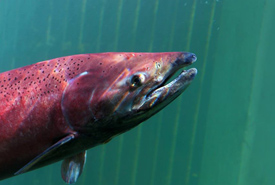
Spawning Chinook salmon (Photo by Fish On in the Yukon)
Before you read any further, stop and think about a fish migrating up a river. Chances are that fish is a salmon and that river is in BC. There’s good reason that salmon in BC have come to symbolize fish migration. The return of millions of...
How do you solve a problem like migration?

A flock of shorebirds takes to the air at Oak/Plum Lake Important Bird Area, a migration stopover site in Manitoba. The mixed-species flock includes Wilson’s phalaropes, red-necked phalaropes, stilt sandpipers, pectoral sandpipers, dunlin, white-rumped sandpipers and semipalmated sandpipers. (Photo by Christian Artuso)
I can feel the rapid thrumming of the bluebird’s heart against my palm as I carefully manoeuvre its foot into position over a tiny Ziploc bag. I pick up my nail scissors and take a deep breath to steady my hand. I will only get one chance to...
Gotta catch 'em all? Count me in!
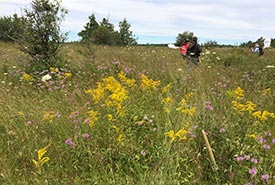
Carden Alvar butterfly count, 2017 (Photo by NCC)
As part of the 2019 Carden Alvar Butterfly Count, we were armed with a few nets and catching jars as our mighty group of eight, comprised of Nature Conservancy of Canada (NCC) staff and conservation volunteers, set out on a mission: to identify...
Small but mighty — Migrating green darner dragonflies
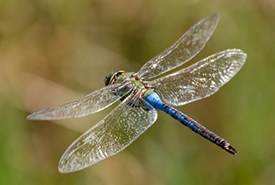
Common green darner (Photo by Nancy Norman, CC BY-NC 4.0)
In February when I wrote this blog, I was thinking about my “snowbird” colleagues taking vacations to escape the cold, Canadian winter. Little did I know that right around that time, a species of dragonfly was beginning to migrate...
Digging badgers: A close encounter
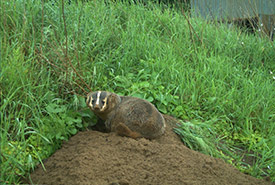
A badger at its burrow. (Photo by J. Sayers, Ontario Badger Project)
“A badger? On my property? There are no badgers here!” is often the response I got from landowners in southern Ontario during my short stint as a field technician for the Ontario Badger Project. American badgers are difficult to spot;...
Conserving what we value
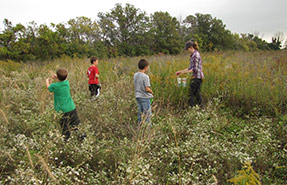
Children from Pelee Island Public School help collect seeds for restoration projects. (Photo by NCC)
It was my time to finally get my message across. About a 15 years ago, the Nature Conservancy of Canada (NCC) was beginning to purchase properties on Pelee Island, in Ontario. The community, however, was uncertain of conservation —...
Something’s Fishy: Catching up on 57 years of conservation
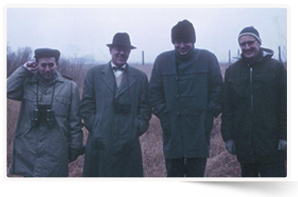
Dr. J. Bruce Falls, Richard Pough, Aird Lewis and Dave Fowle, first exploratory meeting for the Nature Conservancy of Canada, 1961
The Nature Conservancy of Canada (NCC) got its start in the early 1960s with four naturalists who were inspired to protect the natural world around them. Based in Ontario, this plucky band of naturalists launched a program to take direct, private...
Conservation collaboration: How sharing knowledge is shaping the next generation of environmental professionals
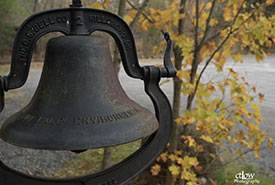
Bell at Elbow Lake (Photo by Charles T. Low Photography)
Nature doesn’t work in isolation. Trying to undertake effective conservation science programs without the support of partners would be impossible; the scope is simply too large. Not everyone can be an expert in everything, but if you draw...
The importance of wetlands
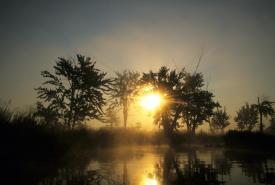
Sunset at Minesing Wetlands, ON (Photo by Ethan Meleg)
In the summer of 2019, I had the pleasure of working as a conservation technician for the Nature Conservancy of Canada (NCC). While I was working out of the Norfolk office in southwestern Ontario, I spent a lot of time in restored fields and...
Don’t trust lady’s-slippers (if you’re a bee)
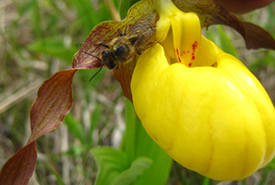
This honeybee was tricked into pollinating this yellow lady’s-slipper. (Photo by Steven Anderson/NCC staff)
Before I began working at the Nature Conservancy of Canada (NCC), I spent six years studying the pollination of two species of lady’s-slipper orchids in Manitoba and the northern U.S. While I no longer spend all of my time thinking about...

